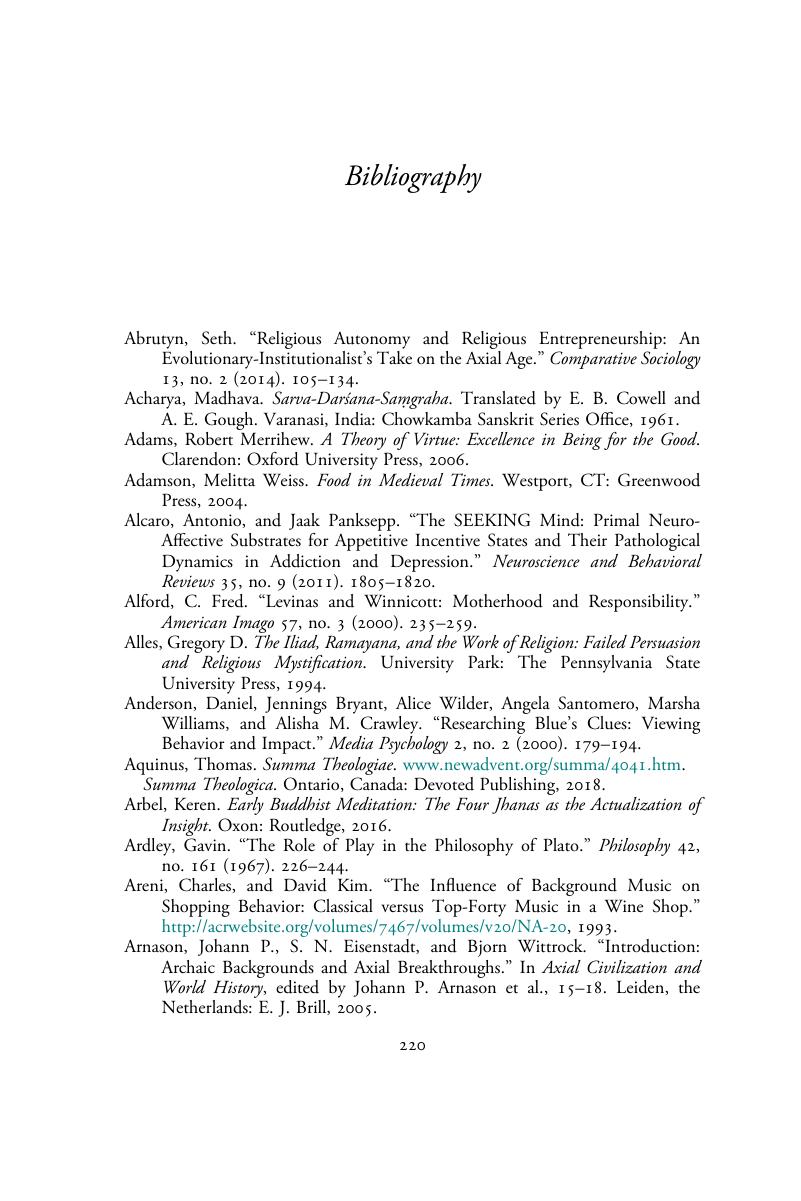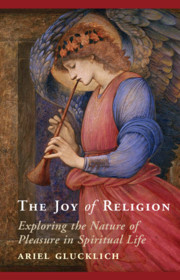Book contents
- The Joy of Religion
- The Joy of Religion
- Copyright page
- Contents
- Acknowledgments
- Introduction
- Chapter 1 The Variety and Mystery of Religious Pleasure
- Chapter 2 The Nature and Cultivation of Complex Pleasure
- Chapter 3 The Discovery of Mastery Pleasure
- Chapter 4 Philo’s Mastery, Plotinus’s Play, and the Mystic’s Joy
- Chapter 5 Pleasure, Play, and Magical Thinking
- Chapter 6 Church-Sect Theory and Pleasure
- Chapter 7 Narratives and Rituals of Pleasure
- Chapter 8 A Scholar’s Shabbat in Central Virginia
- Conclusion
- Bibliography
- Index
- References
Bibliography
Published online by Cambridge University Press: 14 December 2019
- The Joy of Religion
- The Joy of Religion
- Copyright page
- Contents
- Acknowledgments
- Introduction
- Chapter 1 The Variety and Mystery of Religious Pleasure
- Chapter 2 The Nature and Cultivation of Complex Pleasure
- Chapter 3 The Discovery of Mastery Pleasure
- Chapter 4 Philo’s Mastery, Plotinus’s Play, and the Mystic’s Joy
- Chapter 5 Pleasure, Play, and Magical Thinking
- Chapter 6 Church-Sect Theory and Pleasure
- Chapter 7 Narratives and Rituals of Pleasure
- Chapter 8 A Scholar’s Shabbat in Central Virginia
- Conclusion
- Bibliography
- Index
- References
Summary

- Type
- Chapter
- Information
- The Joy of ReligionExploring the Nature of Pleasure in Spiritual Life, pp. 220 - 244Publisher: Cambridge University PressPrint publication year: 2020



